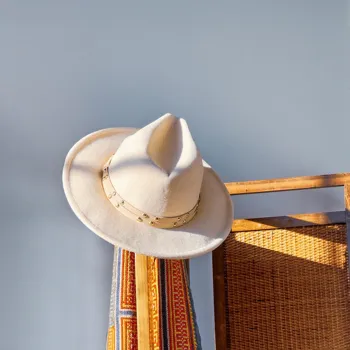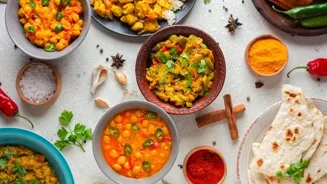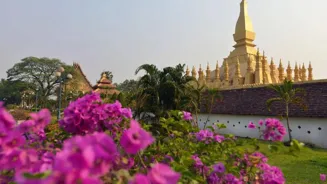Discover how culture shapes fashion globally! From kimonos to dashikis, explore 10 styles that tell captivating stories. Read more to unravel the cultural tapestry of fashion
Fashion, more than just clothes,
is a vibrant reflection of culture, history, and identity. Different parts of the world have unique styles shaped by their traditions, climate, and beliefs. Let's take a trip around the globe and explore ten fascinating examples of how culture influences fashion.
It's amazing to see how clothes tell stories and connect people.
Kimono (Japan)
The kimono, a national dress of Japan, isn't just clothing but a powerful symbol of identity. Skilled artisans create it which takes time and patience. The silhouette is a T-shape, the sleeves are wide, and it wraps around the body.
Different patterns, colors, and fabrics often represent the season or the wearer's age and other aspects like marital status. A silk and beautiful obi or belt holds the kimono in place, which makes the wearer comfortable.
The kimono's grace and elegance have influenced designers worldwide, showing how deeply rooted it is in Japanese culture. It’s a timeless style.
Sari (India)
The sari, a timeless Indian garment, is much more than a piece of cloth; it's an expression of grace, heritage, and femininity. Ranging from bright colors to subtle pastels, adorned with zari work, embroidery, and beads. It showcases the nation's rich textile traditions.
Though the sari is generally worn in India women across the world love to try this. The way a sari is draped varies regionally, reflecting local customs and aesthetics. The sari symbolizes the beauty, diversity, and cultural significance of India.
The beauty of the sari has influenced many fashion lovers all around the globe.
Keffiyeh (Palestine)
The keffiyeh, also known as the kufiya or shemagh, is a traditional Middle Eastern headdress historically worn by men and women. It is fashioned from a square piece of cotton cloth, typically adorned with geometrical patterns.
Although commonly associated with Palestine over time, it has come to represent solidarity, resistance, and cultural identity for Palestinians. This symbol reflects resilience and national pride. The keffiyeh signifies shared heritage for many people.
The keffiyeh is practical for protecting against sun, sand, and dust, however, it has become a distinct symbol.
Hanbok (South Korea)
The hanbok is a traditional Korean dress characterized by its vibrant colors, simple lines, and lack of pockets. It has two main components, the jeogori and the chima. The jeogori is a short jacket and the chima is a high-waisted wrap-around skirt.

The style is meant to reflect harmony, balance, and connection to nature. Hanboks are commonly worn during festivals, weddings, and celebrations reflecting the customs. Modern designers are reinterpreting the Hanbok’s beauty, incorporating its features into mainstream fashion.
Dirndl and Lederhosen (Germany/Austria)
Dirndl and Lederhosen are the national dress of Germany and Austria, particularly in Bavaria and Tyrol regions. The Dirndl is a traditional dress with a close-fitting bodice, full skirt, and apron. The Lederhosen consists of leather shorts or breeches.
They are often worn during celebrations, festivals, and cultural events. Initially, they were worn by peasants, but now they are worn with pride. These outfits symbolize regional identity and heritage. The outfits have been adapted for modern styles.
Tartan (Scotland)
Tartan, also known as plaid, is a patterned fabric made of crisscrossed horizontal and vertical bands in multiple colors. Each clan or family in Scotland is associated with tartans. They are worn with pride to display ancestry and heritage.
Kilts are made with tartan fabric and it's mostly worn by men on special occasions. The symbolic meaning of tartan is that it represents Scottish history and lineage.
Bògòlanfini (Mali)
Bògòlanfini is a traditional Malian handmade cotton fabric which is dyed with mud. The name translates to "mud cloth." The patterns and symbols have cultural and spiritual significance for the Bamana people. Bògòlanfini is often used for clothing, blankets, and decorative items.
It symbolizes identity, history, and craftsmanship. It is also a symbol of Malian culture.
Panama Hat (Ecuador)
The Panama hat, despite the name, originates from Ecuador. These are made from the toquilla palm. The hats are lightweight, breathable, and known for their quality. For the people of Ecuador, it's traditional craftsmanship, cultural pride, and identity. It is now a symbol of style.

Batik (Indonesia)
Batik, from Indonesia, means "writing with wax". Skilled artists make this fabric by applying wax to cloth and then dyeing it, which makes beautiful patterns. Batik patterns often express natural world. Indonesian batik has become a global symbol of cultural identity.
The way the patterns are created show imagination and it is always appealing to the eye.
Dashiki (West Africa): The dashiki is a colorful garment widely worn in West Africa, particularly Nigeria and Ghana. The dashiki is loose-fitting and colorful. It is mostly worn by men, but women are also seen wearing it. The Dashiki symbolizes African identity, liberation, and pride. The dashiki has significantly influenced African fashion.
Fashion is a common language that speaks a lot about who we are. Around the world, clothes show where we come from. By learning about different styles, we can appreciate the world’s cultures.
When we understand the importance of clothing in different cultures, we celebrate the creativity and uniqueness of the fashion.
AI Generated Content. Glance/InMobi shall have no liability for the content













